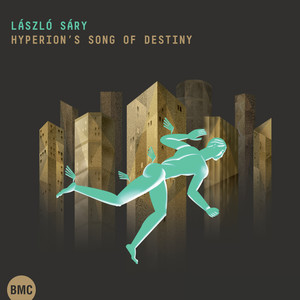
Hyperion's Song of Destiny
- 流派:Classical 古典
- 语种:纯音乐
- 发行时间:2015-10-02
- 唱片公司:BMC Records
- 类型:录音室专辑
- 歌曲
- 时长
简介
Listening to the multifaceted music of László Sáry, one is hard-pressed not to conclude that these sounds could only have been dreamed up by a composer in whose soul there remained some measure of childlike omniscience. Rather than focusing on the playfulness of the eternal child, this CD highlights another aspect of childhood: an openness to sacred things. The piece Hyperions Song of Destiny (Hommage ŕ Hölderlin) is one of his works that comes closest to sacredness. This CD is organized symmetrically, with this magnum opus in the centre: Hyperions Song of Destiny, written in 1985/86 for twenty-four string instruments. The Hölderlin poem from which it takes its inspiration is not heard here, and the music can hardly be said to illustrate the fateless, pure eternal life of the blessed in heaven, or its opposite, the blind destiny of humankind, full of suffering. Yet the trajectory of this composition unfolds like a single twenty-minute breath, in which we can wallow but not take bearings, and the work seems to be a kind of sacrificial music. It opens a window onto another world, onto a hitherto unknown universe of sound. With Hyperion at the centre, three outer layers encase it like the layers of an onion. The outer skin is provided by two settings of poems by Sándor Weöres. Sárys music resonates particularly sensitively to Weöress poetry. The second layer consists of two instrumental compositions: In memoriam Igor Stravinsky (1980, rev. 2001) was written for twenty-four wind instruments, thus recalling the orchestration of the Russian masters Symphonies of Wind Instruments of 1920, while the 2014 piece Ludus choralis, applies a free canon technique, where Sáry weaves the chorale melody above and below the typical, densely textured four orchestral string parts, and it is played in perfect parallel motion on a solo violin and a solo double bass. The third innermost sheath surrounding Hyperion is two versions of the same composition. The 1980 piece, Journey to Ixtlán, is a German translation of the poem El viaje definitivo by the Spanish poet Juan Ramón Jiménez, with the omission of the last verse. A chamber version, created in 1992 for soprano and three solo instruments, entitled El viaje definitivo (The Definitive Journey) uses the original Spanish version of the whole poem, and the same musical material is given a more concise treatment, though its character remains unchanged.







